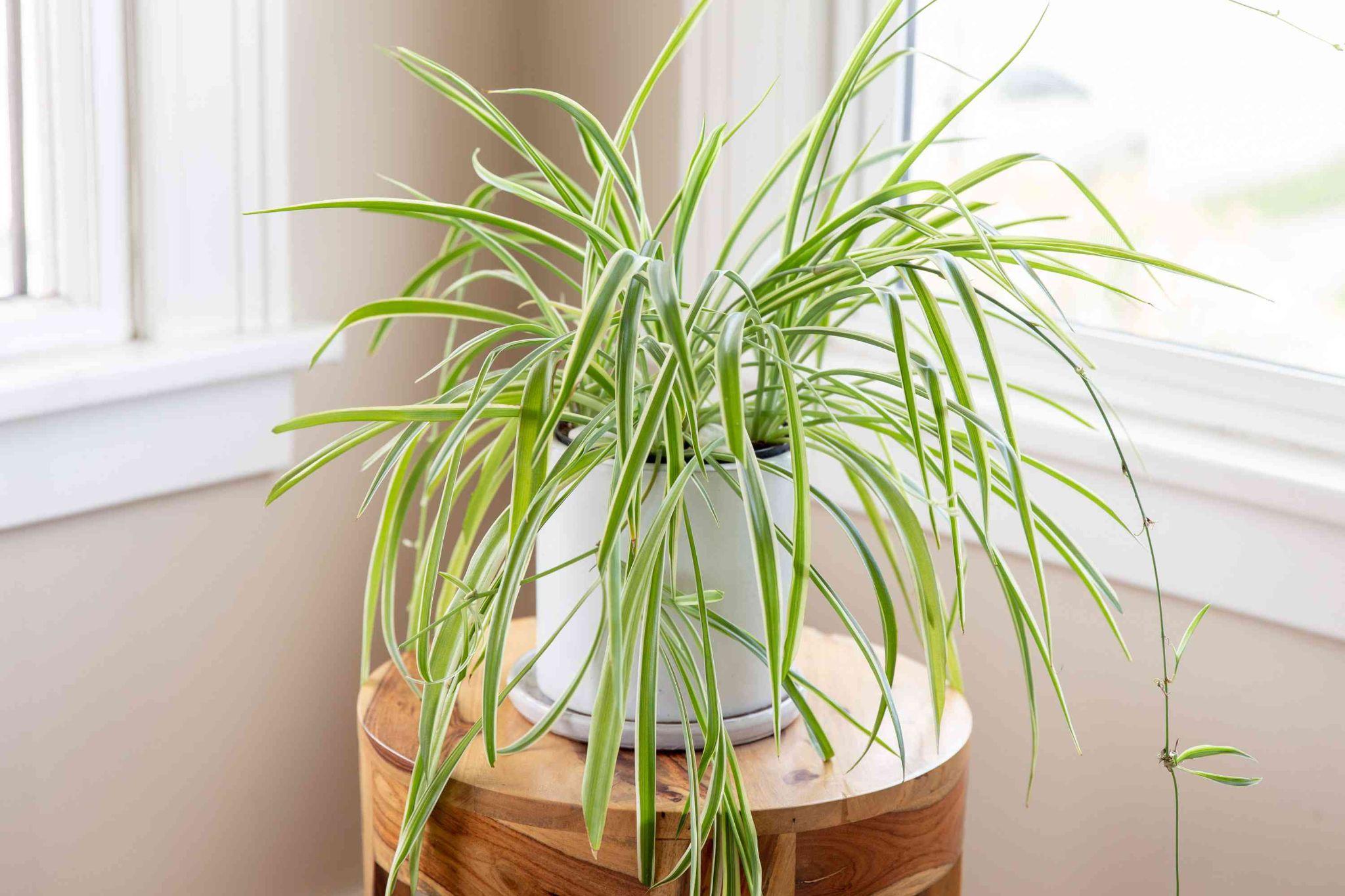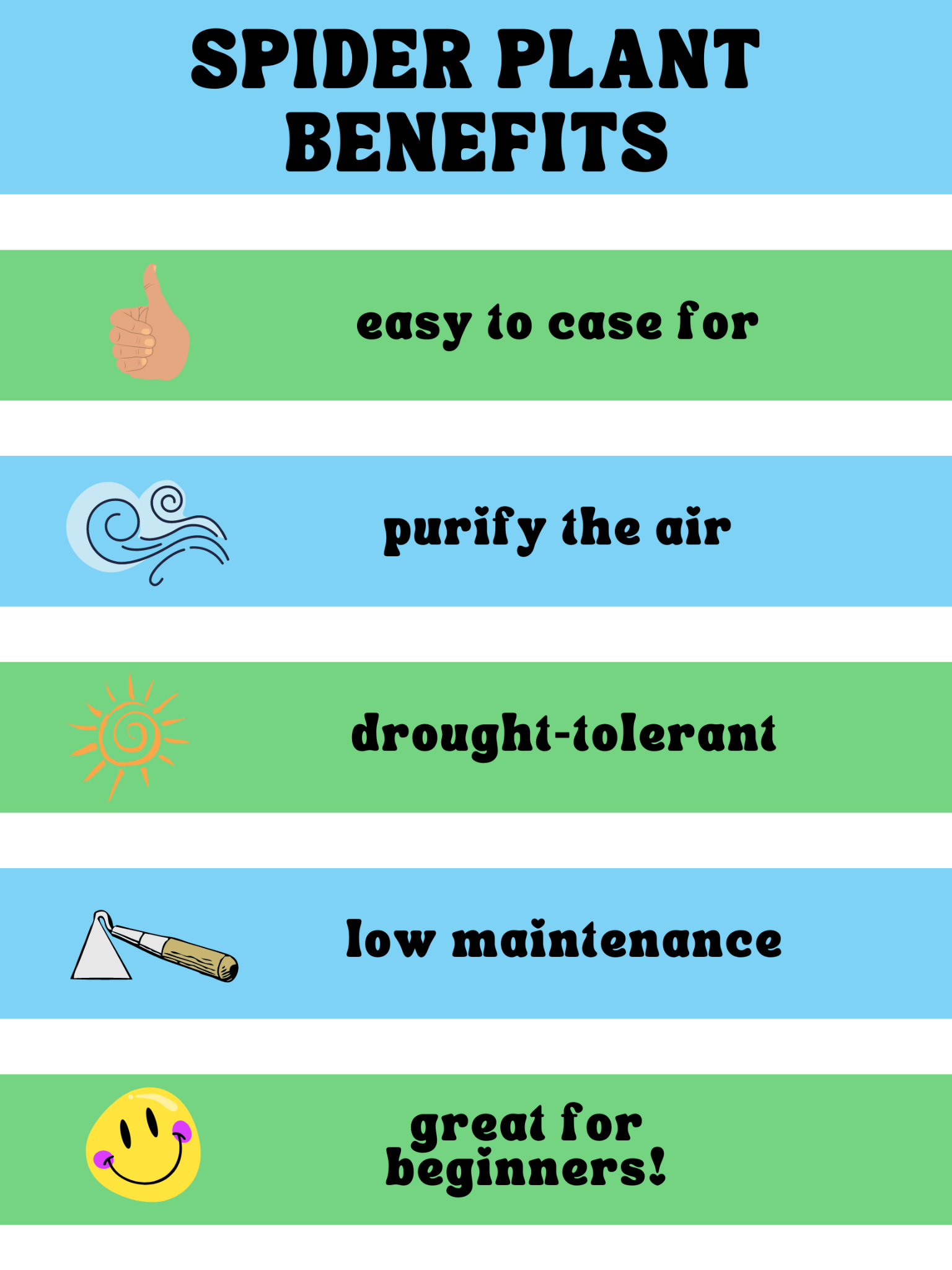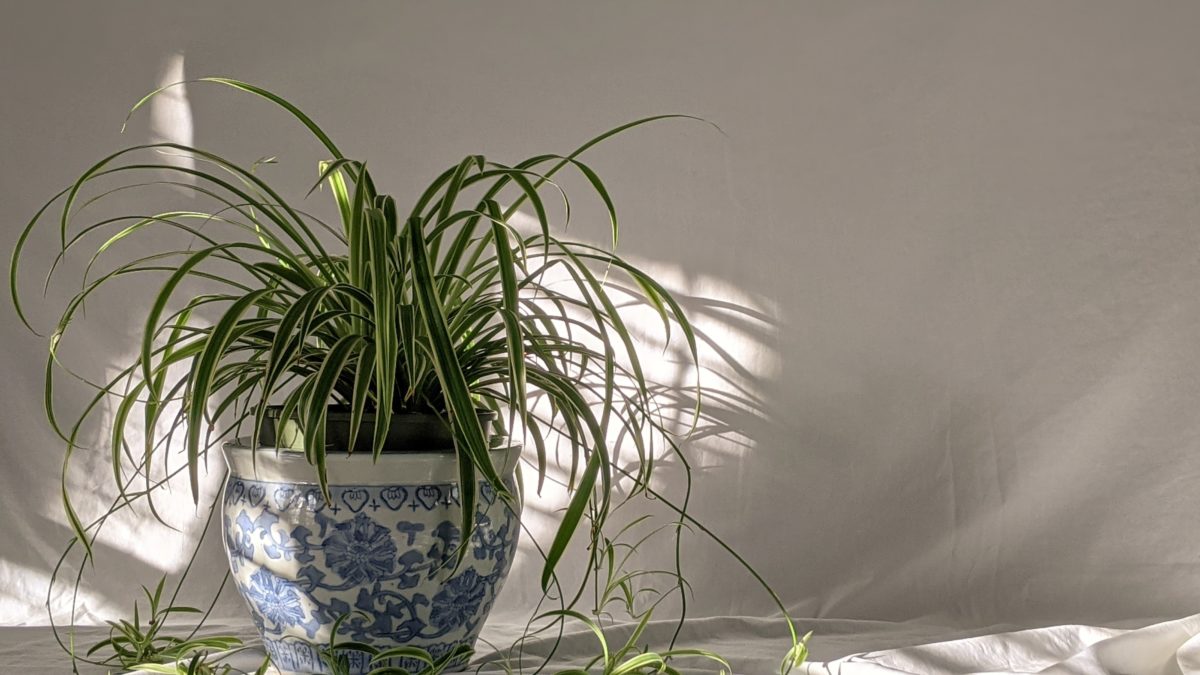If you’re wondering how much sunlight your spider plants needs, you’re in the right place. In this blog post, we’ll give you all the information you need to keep your spider plants healthy and happy.
Spider plants are a popular favorite for beginners in the world of indoor plants, with good reason. They need relatively little sunlight compared to other plants. In this blog post, we’ll explore how much sunlight spider plants need and how to care for them.
How Much Sunlight Do Spider Plants Need?
Spider plants are one of the easiest houseplants to care for. They are very tolerant of different light conditions and can even survive in low light situations. However, they will grow best if they are given at least a few hours of sunlight each day.
If you are growing your spider plant indoors, you should place it near a window where it will receive some direct sunlight. However, be careful not to place it in an area where the sun is too strong, as this can scorch the leaves. Spider plants also do well in bright, indirect light.

If you are growing your spider plant outdoors, it should be in a spot where it will receive some morning sun and some afternoon shade. This will help to protect the leaves from getting too much direct sunlight, which can damage them.
Spider plants are very easy to care for and make a great addition to any home. Just be sure to give them the right amount of sunlight, and they will thrive.
What Type Of Sunlight Works Best For Growing Spider Plants?
When it comes to growing spider plants, the type of sunlight you provide can make a big difference in their overall health and appearance. Here are a few things to keep in mind when it comes to choosing the right type of sunlight for your spider plants:
1. Spider plants prefer bright, indirect sunlight.
This means they do best when they’re placed in a spot that gets plenty of light, but not direct sunlight. Direct sunlight can be too intense for spider plants and can cause their leaves to scorch.
2. Spider plants can tolerate some shade.
If you can’t provide bright, indirect sunlight, then a spot that gets some shade will also work. Just keep in mind that spider plants grown in shady areas may not be as robust or vibrant as those grown in brighter light.
3. Avoid placing spider plants in dark corners.
While spider plants can tolerate some shade, they do best when they’re not placed in dark, dreary corners. Spider plants need bright light to thrive, so avoid placing them in areas that don’t get much light.
4. Consider using grow lights.
If you can’t provide bright, indirect sunlight, then using grow lights can be a great way to give your spider plants the light they need. Grow lights come in a variety of shapes and sizes, so you’ll be able to find one that fits your needs.
5. Be sure to monitor your spider plants.
No matter what type of light you provide, it’s important to keep an eye on your spider plants and make sure they’re getting the light they need. If you notice their leaves start to turn yellow or they begin to stretch, that’s a sign they’re not getting enough light.
By following these tips, you can help ensure your spider plants get the right type of sunlight they need to thrive.
Where Should You Place Your Spider Plant?
When it comes to finding the perfect spot for your spider plant, there are a few things to keep in mind:
First, spider plants prefer bright, indirect sunlight. If you can find a spot near a window that gets plenty of light but isn’t in direct sunlight, that’s ideal.Second, spider plants like to be in warm environments. If your home is on the cooler side, you might want to consider placing your spider plant near a heat source, like a radiator or a heater vent.
Finally, spider plants need to be in a spot where they can get plenty of airflow. This helps them stay healthy and prevents them from getting too humid.
With all of that in mind, here are a few potential places to put your spider plant:
-On a windowsill in a bright room
-On a shelf near a window
-On a table near a window
-On a plant stand near a window
-In a sun room or conservatory
-On a porch or patio
Signs That Your Spider Plants Aren’t Receiving Enough Sunlight
If your Spider plants are not receiving enough sunlight, there are a few things you can look for to tell. The first is the overall health of the plant. If the leaves are pale or yellowing, that is a sign that the plant is not getting enough sunlight. Another sign is the size of the plant. If the plant is smaller than it should be, or if the leaves are smaller than they should be, that is also a sign that the plant is not getting enough sunlight. Finally, if the plant is not growing as quickly as it should be, that is also a sign that it is not getting enough sunlight.
If you think your spider plant is not getting enough sunlight, there are a few things you can do to help. The first is to move the plant to a spot that gets more sunlight. This might mean moving it closer to a window or outside. Another option is to get a grow light to help the plant get the sunlight it needs.
Will Spider Plants Grow Under Artificial Light?
Yes, spider plants will grow under artificial light, but they will not thrive as they would under natural sunlight. Spider plants need at least four hours of direct sunlight each day to stay healthy and grow properly. If you live in an area where there is not enough natural sunlight, you can supplement with fluorescent lighting. Place the spider plant near a window that gets plenty of sunlight, and make sure to turn the lights on for at least four hours each day.
What Is The Best Season For Growing Spider Plants?
In general, spider plants do best in the spring and summer months. They appreciate the warmer temperatures and the longer days, and they will grow and bloom more profusely during these months. However, spider plants are fairly adaptable and can do well in other seasons, as long as they are given the proper care.
During the spring and summer, spider plants should be kept in a spot that receives bright, indirect light. They can tolerate some direct sun, but too much sun will scorch their leaves. If you live in a very hot climate, it’s best to keep your spider plant in a spot that gets morning sun and afternoon shade.
During the fall and winter, spider plants can tolerate lower light levels, but they may not bloom as much. If you want your spider plant to bloom during these months, you can try moving it to a brighter spot, or you can give it extra light by growing it under fluorescent lights.
No matter what season it is, spider plants need to be watered regularly. Allow the soil to dry out between waterings, and be sure to empty any water that collects in the saucer beneath the pot. Spider plants are fairly tolerant of both under and overwatering, but they will do best if they’re kept on the drier side.
If you give your spider plant the proper care, it will thrive no matter what season it is. So if you’ve been wondering whether it’s the right time of year to start growing a spider plant, the answer is that there’s no bad time – as long as you’re prepared to give it the care it needs.
What Are The Benefits Of Spider Plants?
There are many benefits to spider plants, including that they are easy to care for, they can help purify the air, and they can help improve your mood.
Spider plants are one of the easiest houseplants to care for. They are very tolerant of both low light and high light conditions and only need to be watered about once a week. Spider plants are also great for purifying the air. They can remove harmful toxins such as carbon monoxide and formaldehyde from the air. Studies have also shown that having plants in your home can improve your mood and help you to feel more relaxed.

How To Care For Spider Plants
Spider plants are one of the easiest houseplants to care for, which is why they’re perfect for beginning gardeners. They’re also incredibly versatile, able to adapt to a wide range of growing conditions. Here are a few tips on how to care for spider plants so they continue to thrive.
Watering:
Spider plants like to be kept moist, but not soggy. Water them when the top inch or so of soil is dry. If you’re not sure when to water, stick your finger in the soil. If it feels dry to the touch, it’s time to water.
Fertilizing:
Spider plants need to be fertilized about once a month during the growing season. You can use a liquid fertilizer or a slow-release granular fertilizer. Be sure to follow the directions on the fertilizer package so you don’t over or under fertilize your plants.
Pruning:
Spider plants can become leggy and overgrown if they’re not pruned regularly. To keep them looking their best, cut back the stems by a few inches every few months. You can also remove any yellow or brown leaves.
Repotting:
Spider plants like to be potbound, so they don’t need to be repotted very often. Once every two or three years should be sufficient. When you do repot, choose a pot that’s only slightly larger than the current one.
With a little care, your spider plants will continue to thrive for many years to come.
Quick Tips
- Spider plants need bright, indirect sunlight to thrive.
- If you notice your spider plant’s leaves beginning to turn yellow, it’s likely getting too much sun and you should move it to a shadier spot.
- Spider plants are tolerant of a wide range of light conditions, but they will grow best in bright, indirect light.
- Be sure to check your spider plant regularly to ensure it’s getting the right amount of sunlight.
According to a study conducted by the University of California, spider plants need sunlight to thrive. The study found that spider plants grown in sunlight had significantly more leaves and were more robust than those grown in shade.
Conclusion
In conclusion, spider plants need a moderate amount of sunlight to thrive. They can tolerate some shade, but too much shade will cause them to become leggy and produce fewer flowers. If you want your spider plant to be as healthy and vigorous as possible, give it a few hours of sunlight each day.
Michelle Wilde
Related posts
2 Comments
Leave a Reply Cancel reply
![]()
About Michelle Wilde
Michelle Wilde is a stay-at-home mom and avid plant lover. Armed with a post-graduate degree in Computer Science (no kidding!), she loves researching plants and landscapes. When she is not caring for her 4 kids, she spends time on her passion for plants. She blogs at www.indoorplantschannel.com, the trusted source for indoor plants.
Learn more
Subscribe
* You will receive the latest posts and updates about indoor plants!
Search
Recent Posts
Categories
- Beginner Guides (10)
- FAQ (206)
- General (2)
- How-To Guides (212)
- Indoor Plants (214)
- Pest Management (2)
- Plant Problem Solutions (4)
- Seasonal Growing (2)
- Specialized Environments (2)
- Specific Plant Care (3)
- Technical Growing (2)

[…] you want your sunlight spider plant to thrive, there are a few things you need to do. First, make sure it gets plenty of sunlight. […]
[…] Spider plants are very popular houseplants because they are easy to care for and they look great. They are also very resilient and can tolerate a wide range of conditions. Spider plants can be grown in low light or bright light and don’t require much water. […]